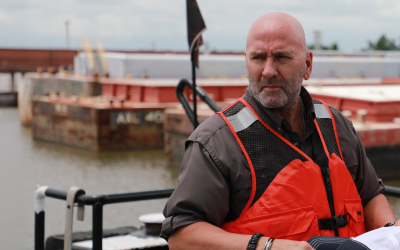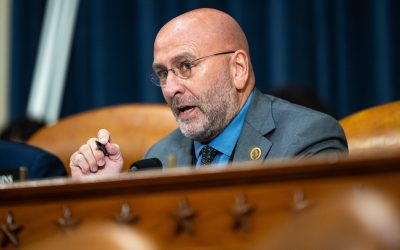The city of Lake Charles, La., already grappling with challenges posed by the coronavirus pandemic, now must tackle the devastation caused by Hurricane Laura.
“The amount of damage was catastrophic,” Mayor Nic Hunter said.
Making landfall as a Category 4 storm, Laura’s wind gusts topped 130 mph in the Lake Charles area, and water from the Gulf of Mexico rose to create a storm surge of more than 4.5 feet.
Nearly every utility pole in two surrounding parishes collapsed, as did the tallest building in town, a 22-story complex that housed Rep. Clay Higgins’ district office.
Laura hit “harder and faster than any storm I’ve ever seen,” Higgins noted. He described the current situation on the ground as “dire.”
In the storm’s aftermath, the community faces the grim reality of battling two disasters at once.
Churches and schools usually act as a ground zero for mega shelters, acting as a temporary, dry place to lodge; but the state’s coronavirus safety restrictions prohibit that.
In a press release on Sept.11, Gov. John Bel Edwards announced Louisiana would begin Phase 3 of its reopening plan. The new ordinance states that “restaurants, churches, salons, spas, gyms and other businesses will be able to open at a maximum of 75 percent of their occupancy, with social distancing in place.” Despite the relaxed measures on gathering spaces, only two shelters are available in the St. Charles area, accommodating just 20 people.
Louisiana’s Office of Homeland Security and Emergency Preparedness estimates that there are 17,000 evacuees as a result of the hurricane.
As a result, most displaced residents have evacuated to New Orleans or Baton Rouge, each well over 100 miles from Lake Charles, where they can receive vouchers to stay in select hotels. The hours-long drive back and forth each day make it difficult for many evacuees to get back to work.
Higgins said recovery efforts are stymied when residents are forced to evacuate across the state. He cited extreme difficulties and delays in clearing and rebuilding properties.
State agencies held meetings this past week to discuss the need for local temporary housing, but there is currently no timeline for when that would become available.
For Jennifer Fontenot, who was 37 weeks pregnant when Laura hit, the nearest vacant hotel room was located in Dallas, a 330-mile journey from her hometown of Sulfur.
Upon returning with a healthy newborn, she found her home had suffered major water damage. She says that now, it is a waiting game with insurance companies, whose coronavirus policies often prevent adjusters from entering a home.
With the state mired in public health and disaster relief emergencies, Edwards predicted that Louisiana would not fully reopen “until a [coronavirus] vaccine is widely available.”
Despite the huge hurdles faced by his constituents, Hunter remained optimistic.
“If there is anyone who could make it through 2020, it’s Lake Charles,” he said.



